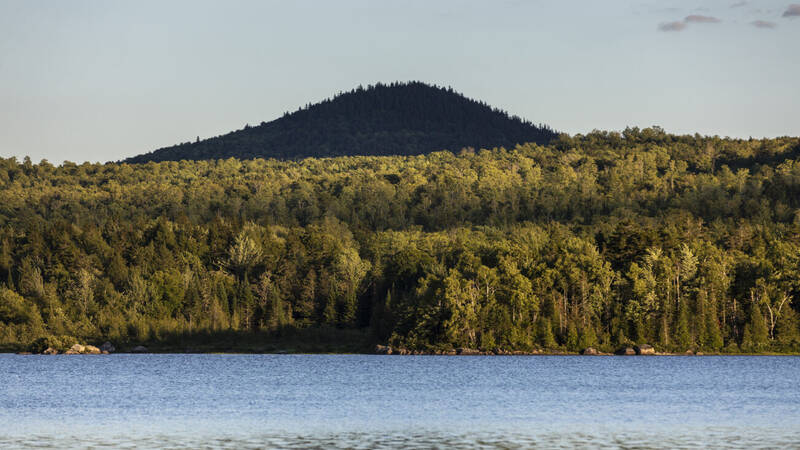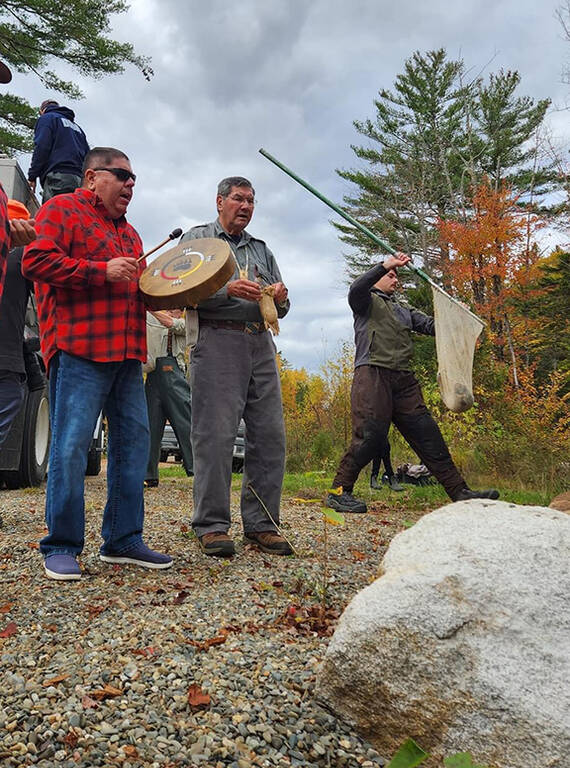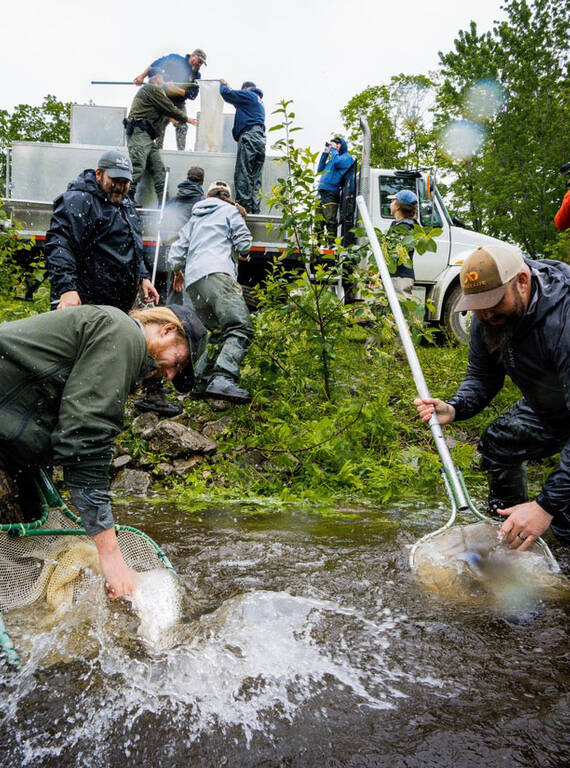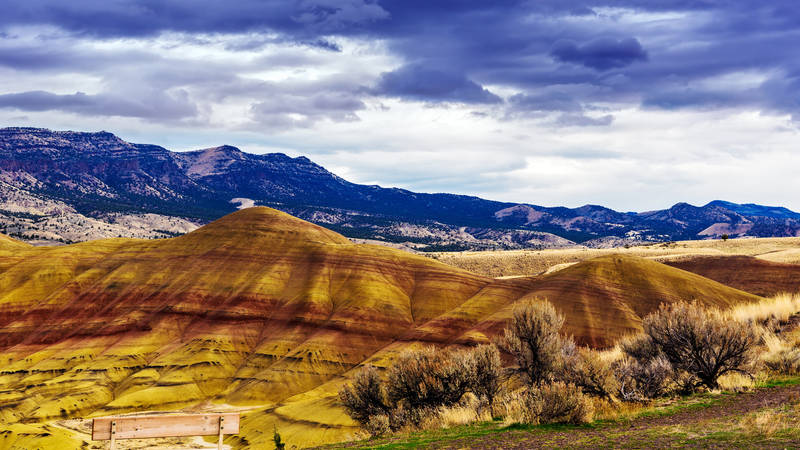A proposed mine near Katahdin Woods and Waters National Monument threatens water, wildlife and dark skies — as well as the Penobscot Nation’s way of life and decades’ worth of work in restoring endangered fish.
EDITOR’S NOTE, Feb. 14, 2024: Maine’s Land Use Planning Commission has denied the zinc mine proposal.
Katahdin Woods and Waters National Monument preserves 87,500 acres along Maine’s East Branch of the Penobscot River. Its vast boreal forests, abundant wildlife and flowing rivers inspired American conservationists from poet Henry David Thoreau to President Theodore Roosevelt and led to its establishment as a national monument in 2016.
Maine’s iconic sports fish, brook trout, as well as bear, moose and the Canada lynx, which is listed as threatened under the Endangered Species Act, rank among the national monument’s wildlife. Hikers, skiers, mountain bikers, hunters and anglers alike enjoy this land — a total of 43,000 visitors came to Katahdin Woods and Waters in 2022 and spent $3 million in the local economy.
This area of Maine also contains minerals. Wolfden Resources Corporation, an exploration company based in Ontario, Canada, has proposed building a zinc mine just 7 miles from the border of Katahdin Woods and Waters’ Seboeis area. For the mine to be built, 374 acres near the Penobscot River headwaters must be rezoned from forestry and agriculture to planned development. Maine’s Land Use Planning Commission (LUPC) is considering Wolfden’s rezoning request and plans to make a decision in February 2024.
NPCA and the monument’s neighbor, the Penobscot Nation, are urging the LUPC to reject this rezoning request.
“After reading Wolfden’s application, it is abundantly clear that their mining proposal is a serious threat to the clean waters, dark skies, quiet solitude, viewshed and endangered species of the Katahdin Woods and Waters National Monument,” NPCA’s Todd Martin, Northeast regional program manager, said in testimony this fall before Maine’s Land Use Planning Commission.

A view of Pickett Mountain, where Wolfden Resources Corporation proposes to build a zinc mine seven miles from the border of Katahdin Woods and Waters National Monument.
Natural Resources Council of Maine / Jerry MonkmanWolfden stated in its application that the mine, located at Pickett Mountain, would have an estimated lifetime of 10-15 years.
So far, the company has not disclosed where it would site the mine’s ore concentration plant or tailings management facilities. Tailings — the residue left after separating a desired mineral from unwanted minerals — can create sulfuric acid drainage, which could pollute nearby waters and kill aquatic life, Martin said.
According to the Maine Geological Survey, Pickett Mountain contains 5 million metric tons of sulfide rock. When exposed to air and rain or snow, sulfide-rich tailings from the mine could create sulfuric acid mine drainage which could flow into local waterways, lower the pH and lead to fish kills. The waterways surrounding Pickett Mountain are key habitat for Atlantic salmon, brook trout and many other aquatic species.
The Penobscot Nation has said the proposed mine threatens their communities’ way of life. That’s why the Tribe, along with the Houlton Band of Maliseet Indians, has formally intervened against the project.
The Penobscot Nation considers the river a beloved relative, a belief reflected in its official enrollment of the river as a citizen of the Penobscot Nation in 2019.

Members of the Penobscot Nation sing the Tribe’s Honor Song as adult salmon are released into the Penobscot River as part of an ongoing salmon restoration project.
Joe “Hugga” Dana“We hunt and fish and gather there, and we respect the river as our relative who provides sustenance to us,” said Chuck Loring, director of the Penobscot Nation Department of Natural Resources.
Loring’s staff has testified before the LUPC that run-off from the mine could undo 30 years’ worth of efforts by the Tribe to improve the water quality of the Penobscot River watershed — a critical habitat for endangered Atlantic salmon and brook trout and where the Tribe holds sustenance fishing rights.
The Penobscot River hosts the largest run of native Atlantic salmon left in the United States.
As many as 100,000 salmon a year once migrated from the Gulf of Maine to the spawning grounds near Mt. Katahdin, but industry pollution and the installation of 100 dams along the river have decimated the fish population.
For decades, the Tribe has worked to rebuild the salmon populations, a project that has included the removal of two dams and the successful opening of 2,000 miles of historic sea-runs for the fish. Salmon are among fish species that live in the ocean for part of their lives and return to cool fresh waters to lay their eggs.

Adult salmon raised from eggs in a hatchery and later transferred to a land-based saltwater facility are released in June 2023 into the Penobscot River, their ancestral home. Conservationists are working to rebuild the species’ population.
NPS/Grace KirkThe Tribe is seeing their work pay off with increasing numbers of salmon and other migrating fish in Maine in recent years, with about 1,600 salmon counted in 2023, up from previous years’ typical 1,000 to 1,500.
“With that area being as crucial as it is to salmon habitat restoration and future habitat, it’s not the place for a mine,” Loring said.
Hardrock minerals are important in developing clean energy technologies, with zinc used in the construction of wind turbines and solar panels.
However, NPCA believes the siting of these mines needs to be given careful consideration.
Other problems with the proposed rezoning that concern NPCA:
• Lighting from the proposed mine could put at risk Katahdin’s 2020 designation as an International Dark Sky Sanctuary for the exceptional quality of its naturally dark night skies.
The monument has long prided itself on night sky tourism and has hosted a dark skies celebration for the past 10 years. The National Park Service determined that Katahdin Woods and Waters has some of the darkest nights skies east of the Mississippi River and plans to construct a new night sky viewing platform in the monument’s Seboeis area.
• Noise created by blasting explosives, rock crushing, dump trucks and other construction equipment would disrupt the monument’s natural sounds for wildlife and visitors alike.
• Obstructed views would result from the mine site’s headframe and hoist, which would rise approximately 80 feet above the tree line. Wolfden’s construction of a nearly 9-mile transmission line through the gateway community of Patten to power the mine, as well as the clearing of 129 acres of forest for a 46-acre solar array, also would diminish views.

Chuck Loring, director of the Penobscot Nation Department of Natural Resources, during a release of adult salmon in June 2023.
NPS/Grace KirkThe site of Wolfden’s proposed mine is currently zoned to permit forestry and agricultural management, which Loring said is in keeping with Tribal management.
“It’s a pretty sensitive area up there,” Loring said. “As far as Maine goes, it’s as good as it gets. It’s peaceful and quaint.”
“Wolfden’s proposed mine threatens Katahdin Woods and Waters,” Martin said. “This watershed is too important to the vitality of the fish, wildlife and Maine way of life to let this mine be placed here.”
The LUPC will vote on Wolfden’s rezoning request in February 2024. If approved, Wolfden will need a mining permit from the Maine Department of Environmental Protection. NPCA will continue to work alongside the Penobscot Nation to oppose the project.
Stay On Top of News
Our email newsletter shares the latest on parks.
About the author
-
 Linda Coutant Staff Writer
Linda Coutant Staff WriterAs staff writer on the Communications team, Linda Coutant manages the Park Advocate blog and coordinates the monthly Park Notes e-newsletter distributed to NPCA’s members and supporters.
-
General
-
- NPCA Region:
- Northeast
-
Issues


